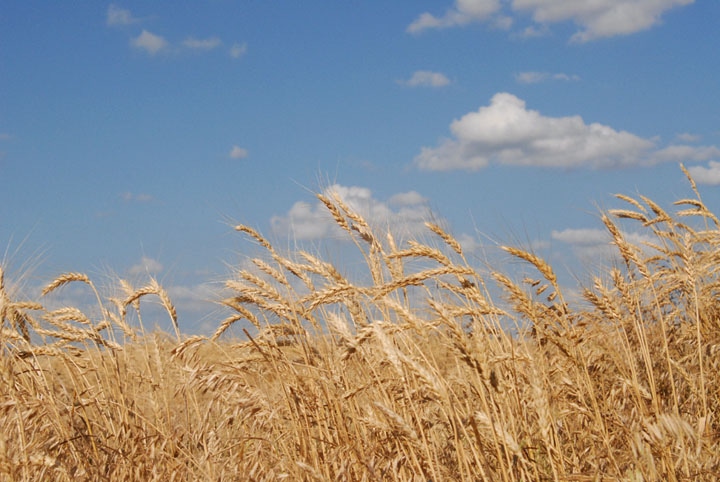September 21, 2016

Cash wheat prices (near $2.80 at this writing) are well below the cost of production. It is a fact that the market will offer prices that provide a profit for some producers. It is also a fact that the market will periodically offer prices that will weed out inefficient, high-cost producers.
Another fact is that a large difference exists in the cost of production between the most profitable and the least profitable farms. Low prices and negative returns reinforce the necessity for producers to calculate both their cost of production and where they fit in the hierarchy of profitable farms.
Kansas Farm Management Association records from 247 wheat farms were used to calculate the cost for producing non-irrigated wheat. The farms were divided into three groups: top, middle, and bottom third by net return to management per acre.
For the crop years 2011 through 2015, the average variable cost per bushel (including a land charge) for the top third was $5.12 per bushel; for the middle third it was $6.31 per bushel; and for the bottom third it was $9.11 per bushel. Subtracting the land charge resulted in $4.66, $5.78 and $8.49 for top, middle, and bottom thirds, respectively.
YIELD AVERAGES
The 5-year average yields per acre were 47 bushels for the top, 41 bushels for the middle, and 33 bushels for the bottom thirds.
The difference in the per bushel cost between the average of the top third and the bottom third is $3.83 (without land) and $3.99 (with land). The difference between the top third and the middle third is $1.12 (without land) and $1.19 (with land). Note that these are averages of the three groups. Fifty percent of the farms in the middle group had per bushel costs more than $1.12 ($1.19 with land) higher than the average of the top third’s cost per bushel.
For 50 percent of the farms to receive a positive return above variable costs, the average price of wheat would needed to have been $5.78 (no land charge) or $6.31 (with land charge).
The records also showed that the cost areas that indicated the greatest difference between groups were fertilizer, herbicide/insecticide, and machinery, in that order. Producers may find it worth their effort to calculate and review the individual cost areas and determine where management practices could be used to replace inputs and reduce costs.
For the latest on southwest agriculture, please check out Southwest Farm Press Daily and receive the latest news right to your inbox.
RETURNS TO GROWERS
When the average cost per bushel is subtracted from the average Kansas price for June and July, the top third’s 5-year average return per bushel was $1.48. For the top third, the net returns were $2.53 (2011), $2.76 (2012), $2.35 (2012), minus 53 cents (2014), and minus 42 cents (2015).
For the middle third, the five-year average was 29 cents per bushel; $1.16 (2011), $1.42 (2012), $1.25 (2013), minus $1.38 (2014), and minus 99 cents (2015). Over the 5-year period, the bottom third had a negative net return every year and an average of a minus $2.51 per bushel.
The Kansas wheat production costs and yields may be different from Oklahoma and Texas costs. But the bottom line results would be about the same. The fact is that about 40 percent of the wheat farms have a negative return over the 5-year period between 2011 and 2015.
The market will provide a profit for wheat production. That profit may only be for the top 60 percent. Now is the time to figure out which group your farm is in and/or how to get the farm in the top third and how to keep it there.
About the Author(s)
You May Also Like






